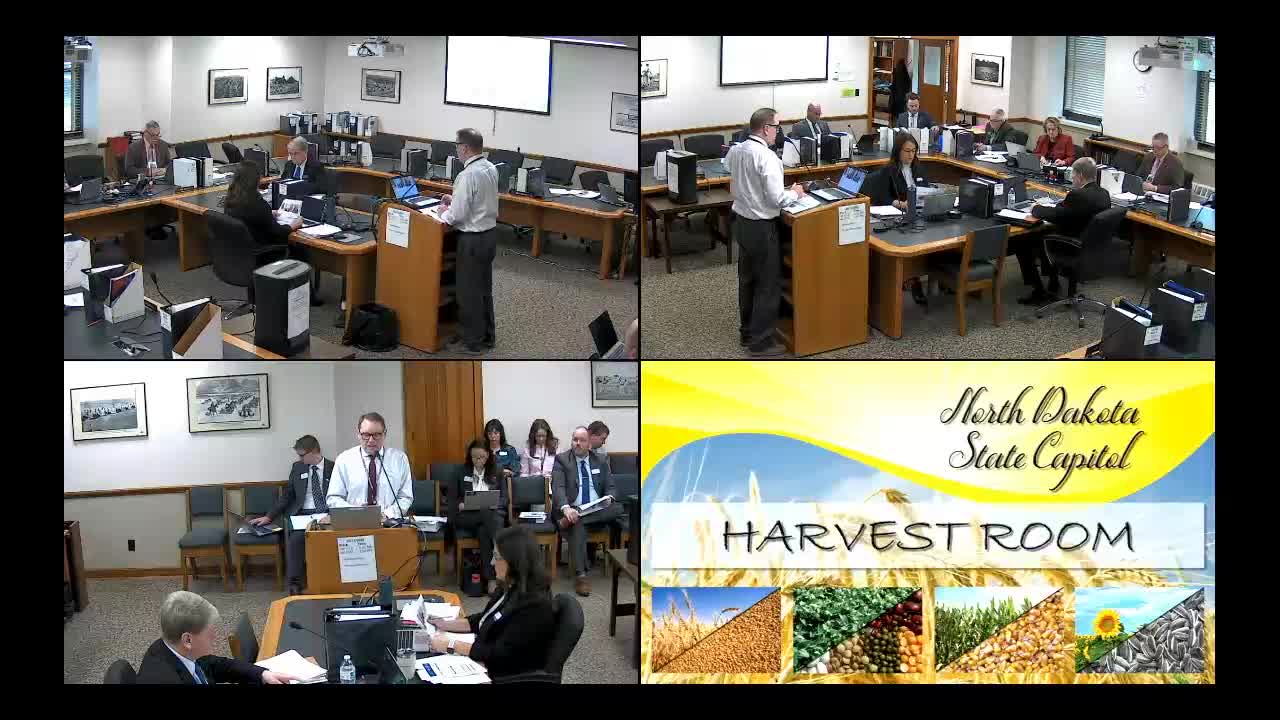North Dakota health officials address declining immunization rates and disease prevention efforts
March 11, 2025 | Appropriations - Human Resources Division, Senate, Legislative, North Dakota
This article was created by AI summarizing key points discussed. AI makes mistakes, so for full details and context, please refer to the video of the full meeting. Please report any errors so we can fix them. Report an error »

In a recent meeting of the North Dakota Senate Appropriations Committee, discussions centered around the state’s immunization efforts and the challenges posed by declining vaccination rates. The meeting, held on March 11, 2025, highlighted the critical role of immunizations in preventing diseases and protecting public health.
Molly Howell, the immunization director, presented data showing significant successes in reducing cases of vaccine-preventable diseases like measles and polio since the introduction of their respective vaccines. However, she cautioned that current immunization rates for kindergarteners are concerning, with some areas reporting rates as low as 57% for the measles, mumps, and rubella (MMR) vaccine. Howell emphasized that maintaining a vaccination rate of at least 95% is essential to prevent outbreaks, particularly given the highly contagious nature of measles.
The committee members engaged in a lively discussion about historical vaccination trends, including a spike in measles cases during the 1970s, which was attributed to the initial recommendation of a single dose of the vaccine. This led to the implementation of a two-dose recommendation and school immunization requirements, which have since improved vaccination rates.
Despite these efforts, Howell noted a troubling upward trend in exemption rates among kindergarteners, now nearing 7%. This trend raises concerns about potential outbreaks, especially as pockets of under-vaccinated individuals exist across the state. The committee acknowledged the importance of addressing these gaps, particularly in light of recent outbreaks in other states.
Funding for immunization programs was also a key topic. The committee discussed the reliance on federal grants, which have remained flat, impacting operational capabilities. Howell explained that while vaccines for children are available to those who qualify, operational funding is crucial for outreach and education efforts to improve vaccination rates.
As the meeting progressed, the committee explored strategies to enhance immunization rates, including reminder systems for parents and collaboration with local health providers. Howell expressed optimism about ongoing initiatives but stressed the need for continued vigilance and community engagement to combat declining vaccination rates.
The discussions underscored the importance of immunizations in safeguarding public health and the challenges that lie ahead in maintaining high vaccination coverage in North Dakota. As the state navigates these issues, the commitment to education and outreach remains vital in preventing the resurgence of vaccine-preventable diseases.
Molly Howell, the immunization director, presented data showing significant successes in reducing cases of vaccine-preventable diseases like measles and polio since the introduction of their respective vaccines. However, she cautioned that current immunization rates for kindergarteners are concerning, with some areas reporting rates as low as 57% for the measles, mumps, and rubella (MMR) vaccine. Howell emphasized that maintaining a vaccination rate of at least 95% is essential to prevent outbreaks, particularly given the highly contagious nature of measles.
The committee members engaged in a lively discussion about historical vaccination trends, including a spike in measles cases during the 1970s, which was attributed to the initial recommendation of a single dose of the vaccine. This led to the implementation of a two-dose recommendation and school immunization requirements, which have since improved vaccination rates.
Despite these efforts, Howell noted a troubling upward trend in exemption rates among kindergarteners, now nearing 7%. This trend raises concerns about potential outbreaks, especially as pockets of under-vaccinated individuals exist across the state. The committee acknowledged the importance of addressing these gaps, particularly in light of recent outbreaks in other states.
Funding for immunization programs was also a key topic. The committee discussed the reliance on federal grants, which have remained flat, impacting operational capabilities. Howell explained that while vaccines for children are available to those who qualify, operational funding is crucial for outreach and education efforts to improve vaccination rates.
As the meeting progressed, the committee explored strategies to enhance immunization rates, including reminder systems for parents and collaboration with local health providers. Howell expressed optimism about ongoing initiatives but stressed the need for continued vigilance and community engagement to combat declining vaccination rates.
The discussions underscored the importance of immunizations in safeguarding public health and the challenges that lie ahead in maintaining high vaccination coverage in North Dakota. As the state navigates these issues, the commitment to education and outreach remains vital in preventing the resurgence of vaccine-preventable diseases.
View full meeting
This article is based on a recent meeting—watch the full video and explore the complete transcript for deeper insights into the discussion.
View full meeting
